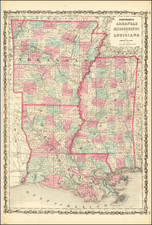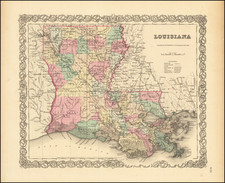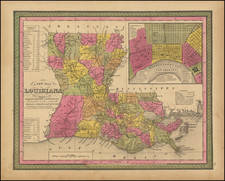"[T]he most historically accurate and best executed of all prints [of the Battle of New Orleans,] regardless of media..." - W.C. Cook
This elaborate aquatint by Jean-Hyacinthe Laclotte is one of the earliest and finest depictions of the Battle of New Orleans, the final clash of the War of 1812, showcasing American forces led by Andrew Jackson decisively defeating the numerically superior British troops invading Louisiana.
The Battle of New Orleans occurred on January 8, 1815, marking the end of Britain's prolonged campaign to capture the southwestern boundary of the United States. Laclotte, a topographical engineer in the First Louisiana Militia, captures a firsthand bird's-eye view of the engagement at Chalmette Plantation, illustrating the robust American defenses under Jackson successfully repelling the British forces advancing along the riverbank, armed with ladders and fascines as well as rifles. Jackson is depicted at the center of his fortifications, next to the American flag, while British commander Packenham is likely the figure being carried off on a stretcher by retreating British troops in the upper part of the image.
The engraving features French and English titles side by side, separated by an American Eagle and the text "To the United States' Glory."
W.C. Cook, in "The Early Iconography of the Battle of New Orleans, 1815-1819", says of the aquatint:
The print itself affords a birds-eye panorama of the action on the east bank [of the Mississippi] at the height of the engagement. It is based on sketches made on the spot by Laclotte, who is identified as an architect and assistant engineer in the Louisiana army... Other veterans of the battle formally endorsed Laclotte's depiction as reliable and such authority has made it the most frequently copied view of the battle...the panorama is so ambitiously extensive that the viewer is removed a great distance and the accuracy of the scale keeps him there...it is the richness of well-drawn detail which distinguishes the Laclotte print. In the left and center foreground, for instance, a handful of British troops have penetrated to the gun battery ahead of the line. At the front of this battery a spirited sword duel shows up clearly against the smoke of the American artillery... further forward, the British officer with pistol and raised sword at the corner of the line is probably Col. Rennie, who was killed in a courageous charge. In fact, his small group succeeded in taking the gun battery...
Jean-Hyacinthe Laclotte was a French painter, architect, and engineer who lived and worked in New Orleans in the early 1800s. There, he established an architectural drawing and painting school modeled after the French tradition. Laclotte also designed several notable homes in the French Quarter and planned the Faubourg Plaisance subdivision. During the war, he volunteered as a topographical engineer with the First Louisiana Militia, creating an eyewitness painting of the Battle of New Orleans that quickly became one of the most renowned images of the event. Although Laclotte completed his original painting within days of the battle, the print engraved by Philibert-Louis Debucourt was not published until two years later, as Laclotte traveled across America and then to Paris to oversee its production.









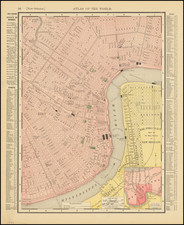
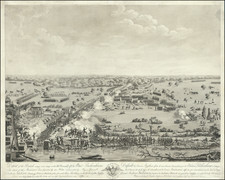
![[Louisiana / British Emigration -- 5 Maps] Land District North of the Red River in the State of Louisiana / District North of the Red River Louisiana / Land District North of the Red River, State of Louisiana / Township 20 N. Range 13 East, Land District North of the Red River in the State of Louisiana / A Map, exhibiting the order oft he Surveys of the Public Lands of the United States of North America . . . .](https://storage.googleapis.com/raremaps/img/small/90084.jpg)
